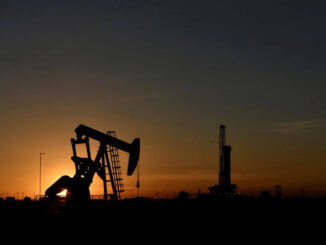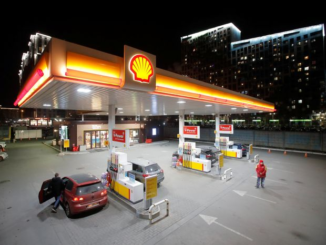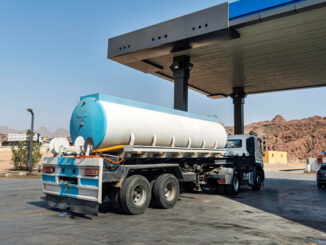
ConocoPhillips Co. and Aker BP ASA have received consent from Norwegian authorities to start production in two separate oil projects in the North Sea.
Expected to go onstream by March, the northern part of the Eldfisk field, which is operated by ConocoPhillips subsidiary ConocoPhillips Skandinavia AS with a 35.11 percent stake, has potential recoverable oil of 50–90 barrels by the operator’s estimate, the Norwegian Offshore Directorate said in a news release announcing the go-ahead.
Meanwhile the Hanz field, operated by Aker BP with a 35 percent interest, holds potentially 19.65 million barrels of oil equivalent, mostly oil, by the company’s estimate, the directorate said in a separate announcement. Hanz is also expected to go online in the first quarter of 2024.
Eldfisk nord and Hanz are the first oil and gas projects in Norwegian waters to have been announced for startup this year.
The Eldfisk nord development has nine production wells and five injection wells. It has two seabed templates for production and a third for water injection.
Located in Block 2/7 as part of the Greater Ekofisk Area, it will help raise the recovery rate from the Ekofisk and Tor formations, the directorate said.
Eldfisk was discovered 1970. Norway approved the development plan for the northern part December 2022. ConocoPhillips’ partners are TotalEnergies EP Norge AS (39.9 percent), Var Energi ASA (12.39 percent), Sval Energi AS (7.6 percent) and Norway’s state-owned Petoro AS (five percent).
Meanwhile the Hanz field has reactivated the subsea installations in the Jette field, which shut down 2016, the directorate said.
Proven 1997, Hanz is part of production license 028 B. Besides Aker BP, Norway’s majority-state-owned Equinor ASA holds a 50 percent stake and Sval Energi has the remaining 15 percent.
The directorate expects “high activity” that was seen 2023 on the Norwegian continental shelf to continue this year, it said in a report January 11. Ninety-two fields were in operation and 27 projects were under development as of December, it said then.
On January 9 the Norwegian parliament endorsed the government’s proposal to open parts of Norwegian waters for mineral exploitation.
“Preliminary figures for December indicate a new export record for a single month, with just under 12 billion standard cubic meters [423.78 billion cubic feet] gas”, the directorate said in the January activity update.
“The Norwegian shelf will continue to play an extremely important role for energy security in Europe for many years to come”, it added.
About 55 percent of resources on the Norwegian continental shelf have been sold according to another report by the directorate February 20. “Seven percent are contingent resources in fields and discoveries – meaning petroleum resources for which development plans have yet to be approved”, the directorate said at the time, adding that 22 percent of overall resources in the area remain to be discovered.
“This shows that, even after 50 years of petroleum activity, there’s plenty left to discover and produce, in all ocean areas”, Nadine Mader-Kayser, assistant director of technology, analyses and coexistence at the directorate, said in a statement at the time.
“This means that we need to find out how they can be produced, profitably and with a small climate footprint, while the infrastructure is still in the area,” Mader-Kayser added.
Official figures separately released February 20, 2024, showed Norway’s total petroleum production in 2024 so far was 21.9 million cubic meters of oil equivalent (773.4 million cubic feet of oil equivalent). Most of the volumes were oil at 9.0 MMcmoe (317.8 MMcfoe), followed by natural gas liquids at 1.2 MMcmoe (42.4 MMcfoe), according to the figures from the directorate.
The Nordic country sold 11.71 billion cubic meters (413.5 billion cubic feet) of gas in January 2024, down 200 million cubic meters (7.1 billion cubic feet) compared to December 2023, according to the directorate.
Norway had been the European Union’s number two source of natural gas next to Russia before Russia invaded Ukraine February 2022. Amid trade sanctions against the Kremlin over the war, Norway overtook Russia as the EU’s top natural gas exporter that year. Norway accounted for 24.4 percent of the region’s gas imports 2022, compared to 15.3 percent from Russia, according to a bulletin update May 3, 2023, by the EU statistics agency Eurostat.



